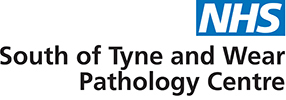GC Culture Swab
Code:
GUMGC
Sample Type:
Amies Agar Gel Transport Swab (Blue top)
Send to laboratory as quickly as possible. Do NOT refrigerate
Ref Ranges/Units:
N/A
Turnaround:
2 – 3 days
Special Precautions/Comments:
N.B. Please consider sending an additional sample for Chlamydia trachomatis and Neisseria gonorrhoeae PCR. For further information refer to https://www.thepathologycentre.org/test/swab-for-chlamydia-and-gc-pcr/
Eye swabs from neonates (<1 month) will receive culture for Neisseria gonorrhoeae in addition to routine eye swab investigation (Code: EYE_SW_BAB). Please refer to https://www.thepathologycentre.org/test/eye-swab-culture/
Interferences: Swabs querying Neisseria gonorrhoeae (GC) should be kept at room temperature and NOT refrigerated. Refrigeration can significantly impact the recovery of GC organisms from culture swabs.
Antibiotics may affect growth of certain bacteria.
Method: Culture on selective media for the isolation of Neisseria gonorrhoeae. Isolates will be identified where clear. Where identification is not clear a likely/possible identity will be given until additional tests can be performed to confirm identity. Significant isolates will undergo antibiotic susceptibility testing on selective sensitivity media. Calibration: N/A. EQA scheme: NEQAS EQA scheme. IQC: Regular resubmission of anonymised patient samples.
Interpretation: Negative cultures will be reported as No growth. Significant organisms will be identified using MALDI-ToF MS and tested for antibiotic susceptibility. POSITIVE results must be discussed with Sexual Health for advice. Positive results may require confirmatory testing, this will be completed using a PCR assay (Cepheid). Isolates exhibiting strong antimicrobial resistance may be sent to a reference laboratory (turnaround 7-10 days). Clinical comment will be provided where appropriate.
PLEASE NOTE! A laboratory chain of evidence form (LCOEF) should accompany all samples to be tested for sexually transmitted infections collected in the following circumstances:
- Anyone aged 12 or under who reports being subjected to sexual activity.
- Anyone aged 13 or over who reports of being subjected to sexual activity to which they did not or were incapable of consenting,
- Or anyone aged 16 or over who reports being subjected to sexual activity to which they did not consent or were incapable of consenting and
- They have not previously been sexually active
- They have been penetrated at a site that was previously sexually naïve (e.g. anal penetration in someone who has not previously participated in anal penetration)
- Or has recently been tested as negative for that sexually transmitted infection.
Laboratory results of forensic importance sometimes arise unexpectedly from specimens collected as part of a routine diagnostic process. Results lacking a formal chain of evidence may be inadmissible in court. In such circumstances, for repeatable specimens, a fresh specimen will be requested and a chain of evidence established from that point.
Additional Information:
Background information: Neisseria gonorrhoeae is the causative agent of gonorrhoea and is the second most commonly reported communicable disease. Clinical manifestations are numerous, in men urethritis, discharge, dysuria, epididymitis or rarely no symptoms. There is a high prevalence of coalescence of symptoms with Chlamydia trachomatis, Trichomonas vaginalis, and vaginosis; many women remain asymptomatic. In symptomatic women increased discharge, dysuria, and intermenstrual bleeding may be observed. Pelvic inflammatory disease (PID) can occur in 10%-20% of women, combined with endometritis, salpingitis, tubo-ovarian abscess, pelvic peritonitis, and perihepatitis. PID can result in tubal scarring that can lead to infertility and ectopic pregnancy. Other gonococcal infected sites in men and women are the rectum, pharynx, conjunctiva, and to a lesser degree the disease presents itself as disseminated gonococcal infection. Infants from infected mothers can develop conjunctivitis.


